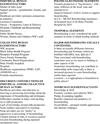Infant Feeding Decision-Making and the Influences of Social Support Persons Among First-Time African American Mothers
- PMID: 27565664
- PMCID: PMC5329142
- DOI: 10.1007/s10995-016-2167-x
Infant Feeding Decision-Making and the Influences of Social Support Persons Among First-Time African American Mothers
Abstract
Background While breast milk is considered the gold standard of infant feeding, a majority of African American mothers are not exclusively breastfeeding their newborn infants. Objective The overall goal of this critical ethnographic research study was to describe infant feeding perceptions and experiences of African American mothers and their support persons. Methods Twenty-two participants (14 pregnant women and eight support persons) were recruited from public health programs and community based organizations in northern California. Data were collected through field observations, demographic questionnaires, and multiple in-person interviews. Thematic analysis was used to identify key themes. Results Half of the mothers noted an intention to exclusively breastfeed during the antepartum period. However, few mothers exclusively breastfed during the postpartum period. Many participants expressed guilt and shame for not being able to accomplish their antepartum goals. Life experiences and stressors, lack of breastfeeding role models, limited experiences with breastfeeding and lactation, and changes to the family dynamic played a major role in the infant feeding decision making process and breastfeeding duration. Conclusions for Practice Our observations suggest that while exclusivity goals were not being met, a considerable proportion of African American women were breastfeeding. Future interventions geared towards this population should include social media interventions, messaging around combination feeding, and increased education for identified social support persons. Public health measures aimed at reducing the current infant feeding inequities would benefit by also incorporating more culturally inclusive messaging around breastfeeding and lactation.
Keywords: African American mothers; Breastfeeding; Combination feeding; Ethnography; Infant feeding; Messaging; Qualitative research; Social support.
Conflict of interest statement
Figures
Similar articles
-
Breastfeeding and use of social media among first-time African American mothers.J Obstet Gynecol Neonatal Nurs. 2015 Mar-Apr;44(2):268-78. doi: 10.1111/1552-6909.12552. Epub 2015 Feb 24. J Obstet Gynecol Neonatal Nurs. 2015. PMID: 25712127 Free PMC article.
-
Factors Distinguishing Positive Deviance Among Low-Income African American Women: A Qualitative Study on Infant Feeding.J Hum Lact. 2017 May;33(2):368-378. doi: 10.1177/0890334416673048. Epub 2016 Nov 24. J Hum Lact. 2017. PMID: 27881731
-
Enhancing Breastfeeding Through Healthcare Support: Results from a Focus Group Study of African American Mothers.Matern Child Health J. 2016 Nov;20(Suppl 1):92-102. doi: 10.1007/s10995-016-2085-y. Matern Child Health J. 2016. PMID: 27449776 Free PMC article.
-
Integrative Literature Review of Factors Related to Breastfeeding in African American Women: Evidence for a Potential Paradigm Shift.J Hum Lact. 2017 May;33(2):435-447. doi: 10.1177/0890334417693209. Epub 2017 Apr 5. J Hum Lact. 2017. PMID: 28380305 Review.
-
A Narrative Review of Culturally Informed Breastfeeding Interventions for African American Women.J Perinat Neonatal Nurs. 2025 Apr-Jun 01;39(2):137-149. doi: 10.1097/JPN.0000000000000912. Epub 2025 Apr 1. J Perinat Neonatal Nurs. 2025. PMID: 40167476 Review.
Cited by
-
Experiences of Racism and Breastfeeding Initiation and Duration Among First-Time Mothers of the Black Women's Health Study.J Racial Ethn Health Disparities. 2018 Dec;5(6):1180-1191. doi: 10.1007/s40615-018-0465-2. Epub 2018 Feb 12. J Racial Ethn Health Disparities. 2018. PMID: 29435898 Free PMC article.
-
Engaging African American Parents to Develop a Mobile Health Technology for Breastfeeding: KULEA-NET.J Hum Lact. 2020 Aug;36(3):448-460. doi: 10.1177/0890334420930208. Epub 2020 Jun 11. J Hum Lact. 2020. PMID: 32525434 Free PMC article.
-
African American Mothers' Decision to Discontinue Breastfeeding and Switch to Formula.West J Nurs Res. 2022 Jan;44(1):15-22. doi: 10.1177/01939459211041164. Epub 2021 Sep 9. West J Nurs Res. 2022. PMID: 34496680 Free PMC article.
-
Determinants of health care worker breastfeeding experience and practices and their association with provision of care for breastfeeding mothers: a mixed-methods study from Northern Thailand.Int Breastfeed J. 2024 Jan 25;19(1):8. doi: 10.1186/s13006-024-00613-4. Int Breastfeed J. 2024. PMID: 38273372 Free PMC article.
-
A nation-wide study on the common reasons for infant formula supplementation among healthy, term, breastfed infants in US hospitals.Matern Child Nutr. 2022 Apr;18(2):e13294. doi: 10.1111/mcn.13294. Epub 2021 Dec 14. Matern Child Nutr. 2022. PMID: 34905644 Free PMC article.
References
-
- American Academy of Pediatrics. Policy Statement Paper. Breastfeeding and the use of human milk. Pediatrics. 2012;129(3):827–841. - PubMed
-
- Aronson J. A Pragmatic View of Thematic Analysis. The Qualitative Report. 1994;2(1)
-
- Barber K. The Black Woman's Guide to Breastfeeding: The Definitive Guide to Nursing for African American Mothers. Naperville, Illinois, Sourcebooks, Inc.; 2005.
-
- Braun V, Clarke V. Using thematic analysis in psychology. Qualitative Research in Psychology. 2006;3(2):77–101.
Publication types
MeSH terms
Grants and funding
LinkOut - more resources
Full Text Sources
Other Literature Sources
Medical
Miscellaneous


